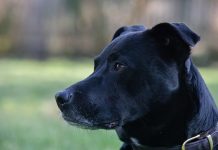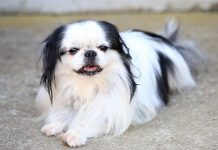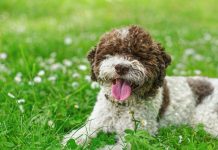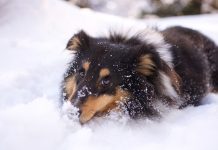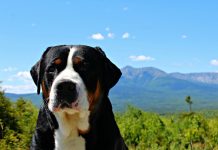History and Origins of the Bedlington Terrier Breed

The Bedlington Terrier is a unique and elegant breed with a fascinating history. Here’s an overview of the origins and development of the Bedlington Terrier:
- Origins in England: The Bedlington Terrier originated in the mining town of Bedlington in Northumberland, England, during the 19th century. It was initially bred for hunting vermin, particularly rats, in mines and later became a popular companion and show dog.
- Ancestral Roots: The exact ancestry of the Bedlington Terrier is debated, but it is believed to have descended from various terrier breeds, including the Otterhound, Dandie Dinmont Terrier, and Whippet. The breed’s unique appearance and skills were likely developed through selective breeding.
- Early Names: The breed was initially known by various names, including the Rothbury Terrier, Rodbury Terrier, and Northumberland Terrier, before settling on the name “Bedlington Terrier” in the mid-19th century.
- Gamekeeper’s Dog: Bedlington Terriers were highly valued by gamekeepers for their versatility in hunting game above and below ground. They were known for their speed, endurance, and ability to dispatch larger quarry such as badgers and otters.
- Transition to Companion Dog: Over time, the Bedlington Terrier’s role shifted from a working terrier to a beloved companion and show dog. Its unique appearance, resembling a small lamb, attracted attention and popularity among dog fanciers.
- Recognition and Standardization: The Bedlington Terrier was officially recognized by The Kennel Club (UK) in the late 19th century. Breed standards were established to preserve the breed’s distinctive appearance and working abilities.
Physical Characteristics and Appearance of Bedlington Terriers
The Bedlington Terrier is easily recognized by its distinctive appearance, often described as resembling a small lamb or a miniature lamborghini. Here are the key physical characteristics and appearance traits of Bedlington Terriers:
- Size: Bedlington Terriers are medium-sized dogs, typically weighing between 17 to 23 pounds (7.7 to 10.4 kg) and standing 15 to 17.5 inches (38 to 44 cm) tall at the shoulder.
- Coat: The breed’s most striking feature is its unique coat, which is a combination of soft, linty-textured fur that forms a distinctive topknot on the head. The coat color can be blue, liver (reddish-brown), or sandy, with lighter shades on the head and legs.
- Head and Expression: Bedlington Terriers have a narrow, tapering head with a gentle slope from the skull to the muzzle. They have almond-shaped eyes that convey intelligence and curiosity.
- Ears: The breed’s ears are long and pendant-shaped, set low on the skull and covered with silky hair.
- Body: Bedlington Terriers have a deep chest, slim waist, and arched back. Their hindquarters are muscular, allowing for agility and speed.
- Gait: The breed’s movement is graceful and effortless, with a springy gait that reflects its terrier heritage.
- Personality: Bedlington Terriers are known for their lively, affectionate, and spirited personalities. They are intelligent dogs with a keen sense of curiosity and are generally good-natured with people.
- Maintenance: Despite their unique coat, Bedlington Terriers require regular grooming to prevent matting and maintain their distinctive appearance. They are considered hypoallergenic and shed minimally.
Overall, the Bedlington Terrier is a charming and distinctive breed with a rich history as both a versatile working terrier and a beloved companion. Its unique appearance, combined with its lively personality, makes it a popular choice among dog enthusiasts worldwide.
Temperament and Personality Traits:
- Gentle and Affectionate: Bedlington Terriers are affectionate and loyal companions. They form strong bonds with their families and thrive on attention and interaction.
- Energetic and Playful: Despite their elegant appearance, Bedlington Terriers are active and playful dogs. They enjoy games, toys, and engaging activities that keep them mentally and physically stimulated.
- Curious and Intelligent: Bedlington Terriers are intelligent dogs with a curious nature. They enjoy exploring their surroundings and learning new things, making them responsive to training.
- Alert and Watchful: Like many terriers, Bedlington Terriers are alert and make good watchdogs. They will alert their owners to potential intruders or unusual sounds.
- Confident and Spirited: Bedlington Terriers possess a confident demeanor and a spirited personality. They are not shy or timid dogs and can be quite assertive.
- Independent Thinkers: While intelligent and trainable, Bedlington Terriers have an independent streak. They may require patient and consistent training to overcome stubbornness.
- Good with Children: Bedlington Terriers are generally good with children and can be playful and gentle companions for kids. As with any breed, supervision and teaching children proper interaction with dogs are important.
- Socialization Needs: Proper socialization from an early age is essential for Bedlington Terriers. Exposing them to various people, animals, and environments helps prevent shyness or fearfulness.
Training and Socialization Needs:
- Positive Reinforcement: Bedlington Terriers respond well to positive reinforcement training methods. Use treats, praise, and rewards to motivate and encourage desired behaviors.
- Early Obedience Training: Start training your Bedlington Terrier puppy as soon as you bring them home. Teach basic commands such as sit, stay, come, and leash walking. Consistency and patience are key.
- Socialization with People and Dogs: Expose your Bedlington Terrier to different people, including strangers, and other dogs from a young age. This helps them develop good social skills and prevents aggression or fearfulness.
- Channel Energy Appropriately: Bedlington Terriers have moderate energy levels and require regular exercise. Daily walks, playtime, and interactive games like fetch or agility training are important to keep them mentally and physically fit.
- Crate Training: Consider crate training your Bedlington Terrier to provide them with a safe and comfortable space when you’re not home. Crate training can also help with house training.
- Consistent Leadership: Establish yourself as a calm and confident leader for your Bedlington Terrier. Set clear rules and boundaries, and avoid harsh punishment or yelling.
- Behavioral Challenges: Address any behavioral issues such as barking, digging, or chewing early on with positive training methods. Seek guidance from professional trainers if needed.
By providing proper training, socialization, and exercise, you can help your Bedlington Terrier develop into a well-mannered and well-adjusted companion. Their affectionate nature and lively personality make them a delightful addition to families willing to invest time and effort in their care and training.
Health Considerations and Common Issues in Bedlington Terriers
Bedlington Terriers are generally a healthy breed, but like all dogs, they can be prone to certain health conditions. Being aware of these potential issues can help you provide appropriate care and early intervention for your Bedlington Terrier. Here are some common health considerations:
- Copper Toxicosis: This is a genetic disorder that affects copper metabolism in the liver, leading to copper accumulation and potential liver damage. Bedlington Terriers are predisposed to this condition, and affected dogs may show symptoms such as lethargy, jaundice, and gastrointestinal issues. Regular monitoring of copper levels and appropriate dietary management are essential.
- Renal Cortical Hypoplasia: This is a hereditary kidney condition that can lead to kidney failure in Bedlington Terriers. Symptoms may include increased thirst, frequent urination, and weight loss. Early detection and management are crucial to slow disease progression.
- Patellar Luxation: This condition involves the dislocation of the kneecap, which can cause lameness and discomfort. Bedlington Terriers may be susceptible to patellar luxation due to their conformation. Severe cases may require surgical correction.
- Hereditary Eye Diseases: Bedlington Terriers can be prone to various eye conditions, including progressive retinal atrophy (PRA) and cataracts. Regular eye exams by a veterinary ophthalmologist can help detect and manage these issues.
- Heart Disease: Bedlington Terriers may be at risk of developing inherited cardiac conditions such as mitral valve disease. Routine veterinary check-ups, including cardiac evaluations, are important for early detection and treatment.
- Hypothyroidism: Some Bedlington Terriers may develop hypothyroidism, a condition where the thyroid gland does not produce enough hormones. Symptoms may include weight gain, lethargy, and skin problems. Thyroid hormone replacement therapy can manage this condition effectively.
- Legg-Calve-Perthes Disease: This condition involves the degeneration of the hip joint, leading to pain and lameness. Bedlington Terriers may be predisposed to Legg-Calve-Perthes Disease, and surgical intervention may be necessary in severe cases.
- Dental Issues: Bedlington Terriers are prone to dental problems such as tartar buildup and periodontal disease. Regular dental care, including brushing and professional cleanings, can help maintain oral health.
Living with a Bedlington Terrier: Suitable Environments and Lifestyle Considerations
Bedlington Terriers are adaptable and affectionate companions that thrive in a loving home environment. Consider the following factors when living with a Bedlington Terrier:
- Indoor Living: Bedlington Terriers are well-suited for indoor living and should be provided with a comfortable and secure living space within the home. They enjoy being close to their families and should not be left alone outdoors for extended periods.
- Exercise Needs: Despite their elegant appearance, Bedlington Terriers are active dogs that require regular exercise to stay healthy and mentally stimulated. Daily walks, playtime, and interactive games are important for meeting their exercise needs.
- Grooming Requirements: Bedlington Terriers have a unique coat that requires regular grooming to prevent matting and maintain its texture. Weekly brushing, occasional trimming, and regular visits to a professional groomer are recommended.
- Social Interaction: Bedlington Terriers are social dogs that enjoy companionship and interaction with their families. They may not do well with long periods of isolation and thrive in households where they receive attention and affection.
- Training and Mental Stimulation: Provide consistent training and mental stimulation to keep your Bedlington Terrier engaged and well-behaved. They excel in obedience training, agility, and other canine activities.
- Health Monitoring: Regular veterinary check-ups, including screenings for genetic predispositions, are important for maintaining your Bedlington Terrier’s health and detecting any potential issues early.
- Family Dynamics: Bedlington Terriers can adapt well to various family dynamics, including households with children and other pets. Early socialization is key to ensuring positive interactions with family members and visitors.
- Safety Considerations: Due to their small size and delicate build, supervise Bedlington Terriers around larger or more boisterous dogs to prevent accidental injuries.
By providing a loving and attentive home environment, regular veterinary care, and appropriate exercise and training, you can ensure a happy and healthy life for your Bedlington Terrier. Their affectionate nature and unique personality make them wonderful companions for families looking for a devoted and charming canine companion.
Bedlington Terrier Variations and Breeding Practices

The Bedlington Terrier breed is relatively standardized in terms of appearance and characteristics, and there are few variations within the breed compared to some other dog breeds. However, responsible breeding practices are essential to maintain the health, temperament, and conformation of Bedlington Terriers. Here’s an overview of Bedlington Terrier variations and breeding practices:
Coat Color Variations:
- Blue Bedlington Terriers: The most common color variation of Bedlington Terriers is blue, which ranges from a light, silvery blue to a deeper steel blue. Blue Bedlington Terriers often have lighter-colored furnishings on the head and legs.
- Liver Bedlington Terriers: Some Bedlington Terriers may have a liver (reddish-brown) coat color. Liver-colored Bedlington Terriers are less common but recognized within the breed standard.
- Sandy Bedlington Terriers: Sandy-colored Bedlington Terriers have a lighter, cream-colored coat with sandy or wheaten shades. This color variation is also less common but considered acceptable within breed standards.
Breeding Practices:
- Health Screening: Responsible breeders conduct thorough health screenings for genetic conditions that commonly affect Bedlington Terriers, such as copper toxicosis, renal cortical hypoplasia, and eye diseases. Screening helps ensure that breeding pairs are healthy and less likely to pass on hereditary diseases to their offspring.
- Temperament and Conformation: Ethical breeders prioritize temperament, conformation, and overall breed standard when selecting breeding pairs. The goal is to produce puppies with stable temperaments, correct structure, and adherence to breed characteristics.
- Avoiding Inbreeding: To maintain genetic diversity and reduce the risk of inherited health issues, reputable breeders avoid excessive inbreeding and carefully select unrelated or minimally related breeding pairs.
- Breeding for Purpose: While most Bedlington Terriers are bred for companionship and show, some breeders may also focus on preserving the breed’s original hunting and vermin-hunting abilities. Working lines of Bedlington Terriers may have slightly different characteristics and energy levels compared to show lines.
- Ethical Considerations: Responsible breeders prioritize the welfare of their dogs and puppies. They provide proper care, socialization, and early training to ensure well-adjusted and healthy puppies.
- Breed Club Standards: Reputable breeders adhere to the standards set by Bedlington Terrier breed clubs and kennel clubs, which outline desired traits, appearance, and temperament for the breed.
- Educational Outreach: Ethical breeders educate potential owners about the Bedlington Terrier breed, including their characteristics, exercise needs, grooming requirements, and potential health concerns. They offer ongoing support and guidance to puppy buyers throughout the dog’s life.
By following responsible breeding practices and prioritizing the health and welfare of Bedlington Terriers, breeders contribute to the preservation and longevity of this unique and charming breed. If considering acquiring a Bedlington Terrier puppy, seek out a reputable breeder who demonstrates a commitment to breed standards, health testing, and ethical breeding practices.
50 Best Names with Meanings for Bedlington Terriers
Naming your Bedlington Terrier is a fun and important decision that reflects their unique personality and characteristics. Here are 50 great names along with their meanings that could be perfect for your Bedlington Terrier:
Male Bedlington Terrier Names:
- Bolt – Represents speed and agility.
- Finn – Means “fair” or “white.”
- Oscar – Means “divine spear,” ideal for a strong and spirited dog.
- Casper – Represents friendliness and charm.
- Jasper – Means “treasurer,” perfect for a cherished companion.
- Archie – Short for “architect,” ideal for an intelligent and curious dog.
- Felix – Means “happy” or “fortunate.”
- Cody – Means “helpful” or “pillow.”
- Dexter – Means “right-handed” or “skillful.”
- Leo – Represents strength and bravery.
Female Bedlington Terrier Names:
- Willow – Represents grace and flexibility.
- Luna – Means “moon,” reflecting a calm and mysterious nature.
- Ruby – Reflects the red coat color, ideal for a female ACD.
- Stella – Means “star,” symbolizing brightness and beauty.
- Zara – Means “princess,” ideal for a regal and confident dog.
- Misty – Reflects a mysterious and alluring personality.
- Poppy – Represents beauty and resilience.
- Zoe – Means “life,” ideal for a lively and energetic dog.
- Mila – Means “gracious” or “dear.”
- Rosie – Represents sweetness and affection.
Unique Bedlington Terrier Names:
- Finnegan – Means “fair” or “white.”
- Cosmo – Represents order and harmony.
- Sullivan – Means “dark-eyed” or “little dark eye.”
- Bramble – Represents resilience and adaptability.
- Alistair – Means “defender of the people.”
- Elodie – Means “foreign riches.”
- Phoebe – Means “radiant” or “shining one.”
- Ivy – Represents fidelity and endurance.
- Quincy – Means “fifth son.”
- Lark – Symbolizes freedom and joy.
Strong Bedlington Terrier Names:
- Axel – Means “father of peace.”
- Titan – Represents immense size and strength.
- Rogue – Represents independence and adventure.
- Gideon – Means “hewer” or “one who cuts trees.”
- Harley – Means “hare’s meadow,” ideal for a lively and energetic dog.
- Jett – Represents black gemstone, symbolizing strength and elegance.
- Maximus – Means “greatest” or “largest.”
- Atlas – Named after the Titan who held up the sky, symbolizing strength.
- Griffin – Represents strength and vigilance.
- Blaze – Symbolizes fire and energy.
Elegant Bedlington Terrier Names:
- Aurora – Means “dawn,” symbolizing beauty and grace.
- Lola – Represents femininity and elegance.
- Marlowe – Means “driftwood hill,” ideal for a calm and peaceful dog.
- Sage – Represents wisdom and serenity.
- Iris – Named after the goddess of the rainbow, symbolizing beauty and diversity.
- Cordelia – Means “heart” or “daughter of the sea.”
- Phantom – Represents mystery and intrigue.
- Seraphina – Means “fiery” or “burning one.”
- Valentina – Means “strong” or “healthy.”
- Celeste – Means “heavenly” or “divine.”
Choose a name that resonates with you and captures the essence of your Bedlington Terrier’s personality and charm. Whether you prefer traditional names, unique and meaningful names, or strong and elegant names, these options should inspire you to find the perfect name for your beloved Bedlington Terrier!

In summary, this guide has provided a comprehensive overview of Bedlington Terrier dogs, highlighting their unique breed characteristics and essential care considerations. Throughout our exploration, we’ve delved into the history, distinctive traits, and important aspects of owning a Bedlington Terrier.
Bedlington Terriers are known for their graceful appearance, gentle demeanor, and intelligence. They are affectionate companions that require regular grooming and exercise to maintain their distinctive coat and overall health.
As you embark on your journey with a Bedlington Terrier, it’s important to provide them with proper training, socialization, and mental stimulation. They thrive on companionship and do well in homes where they receive attention and love.
With patience and dedication, Bedlington Terriers can make wonderful companions for families and individuals who appreciate their unique charm and loving nature. Remember to consult with veterinarians and experienced dog trainers for specific guidance tailored to your Bedlington Terrier’s individual needs. By understanding and meeting their needs, you’ll create lasting memories and enjoy a fulfilling companionship with this delightful breed.






